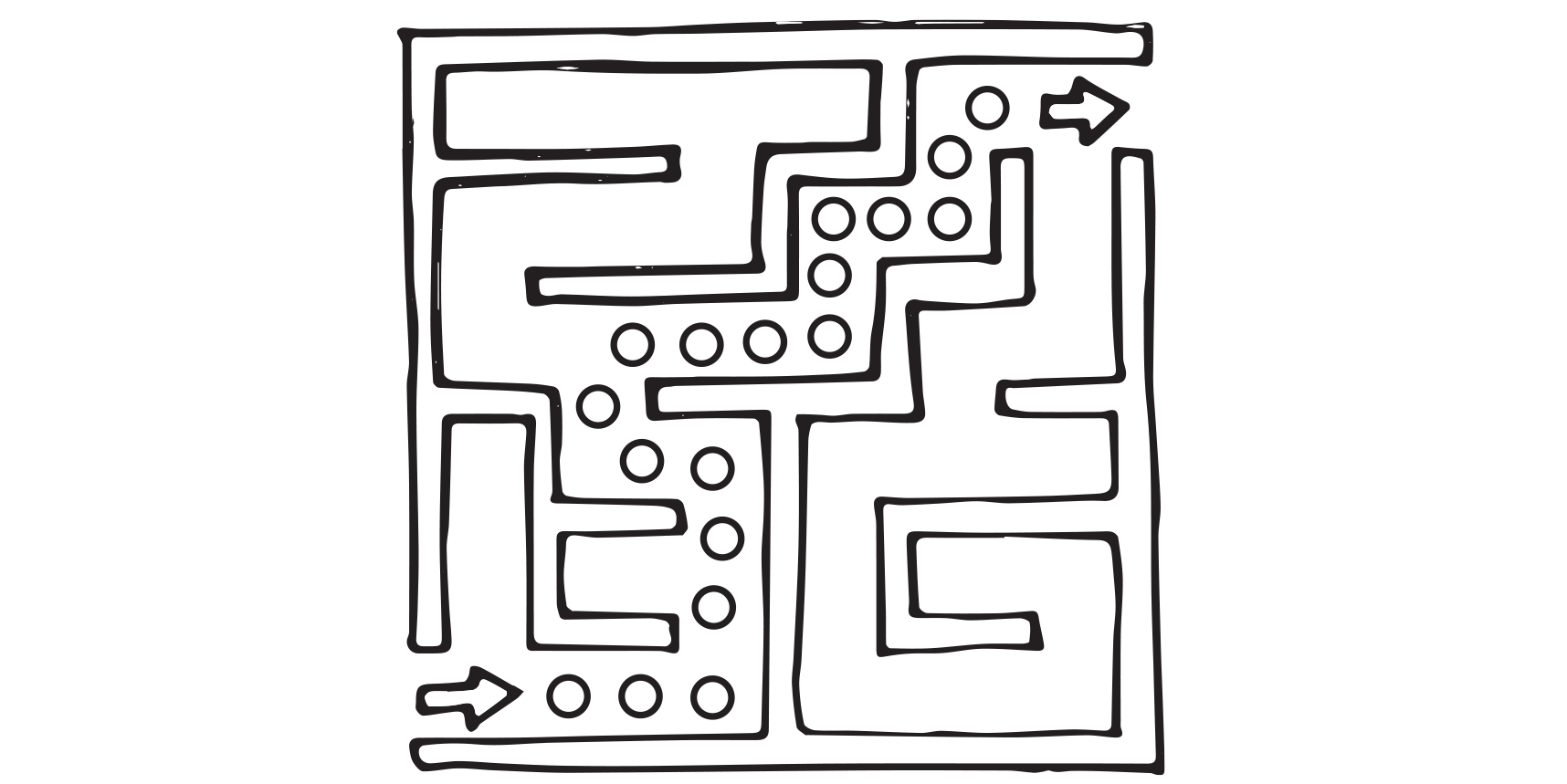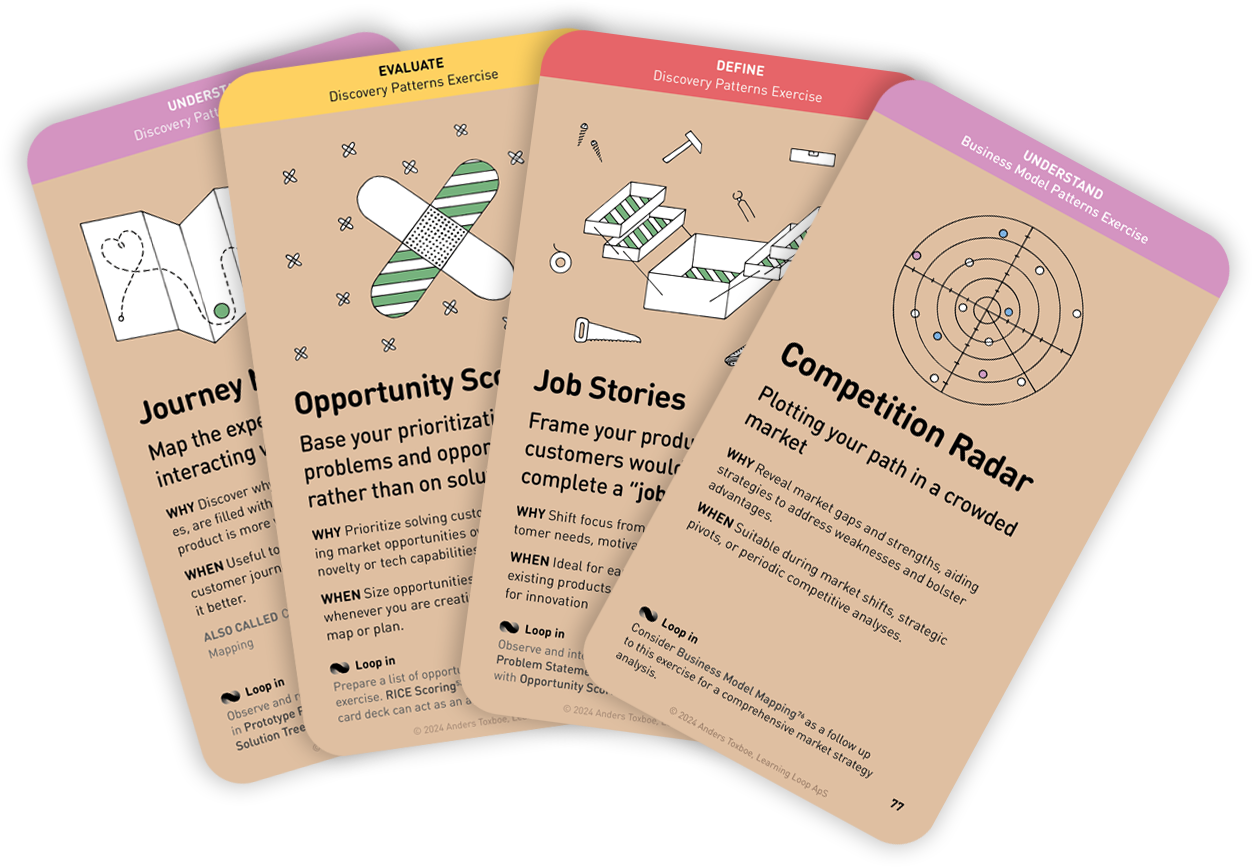Workshop Exercises: Define
Golden Path
Define the key steps a user takes to experience a product's real value

Why: Concentrate your design and development efforts toward the most effective and satisfying journey to value
When: During initial product design or when improving an existing product's user experience
Instructions for running this play
- Identify User Stories. Begin by brainstorming all possible user stories for the product. If the product already exists, draw from user feedback and analytics. If the product is yet to be launched, base these stories on your understanding of the user’s needs and product’s capabilities. Consider using Journey Mapping for this step.
- Break Down Each Story. Write each step of every user story on separate sticky notes. Lay them out in the order they would occur in the user’s experience. This will create a visual representation of the potential paths a user could take. Consider using User Story Mapping for this step.
- Discover the Golden Path. Highlight the series of steps that lead the user to experience the core value of the product most efficiently. This sequence should be straightforward, user-friendly, and focus on the central functionality of the product, rather than exceptions or errors. This is your Golden Path.
Instructions for running this play
- Defining the Intent (The Want). Define your customer’s want or need that prompts them to use your product. These wants or needs are the driving force behind customer movement through your experience. Remember, this should be the customer’s natural, unmanipulated desire.
- Defining the Outcome (The Desire). Identify the desired outcome or the reward that your customers expect from their journey. This should include any emotional satisfaction or tangible value that customers seek. Remember, outcomes are different from outputs, they relate to the deeper emotional motivation.
- Crafting The Path Beat by Beat. Using the customer’s intent and desired outcome as the start and end points, lay out a step-by-step user journey, expressed as a series of question-response cycles or ‘beats’. Each beat represents a single interaction between the user and the system.
- Identifying Key Functions. For each beat, determine the primary function that would satisfy the user’s question. This should be done by asking, “What would a satisfying response from the machine be for this moment?”
- Crafting Form for Each Function. For each identified function, brainstorm multiple ways this function could take form in the actual product design. This step might involve multiple team members or external parties to diversify the brainstorming process.
- Crafting Questions in the Customer’s Voice. Revisit each beat and ensure the questions are phrased authentically from the customer’s perspective. You should aim to understand the customer’s needs well enough to articulate these questions accurately. If in doubt, conduct interviews with customers for this purpose.
Tips to perfect this play
Master and adapt the play to fit your context and needs.
Tip: Follow-ups
This exercise works great as an extension to User Story Mapping or Journey Mapping
Tip: Go for the majority
The Golden Path represents the most effective and satisfying journey to value for the majority of users.
A collection of workshop exercises that will help you ditch dull meetings and facilitate with confidence. It will help you master the design process and have more productive time with your team. The card deck will be ready for purchase in the end of 2026 and is now undergoing rigorous testing.
Reserve your deck!
